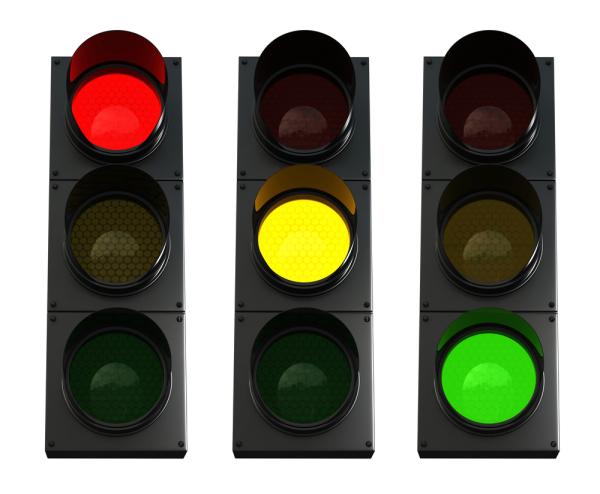For many of us, there's often a tug of war when making some food choices. Should we go for the yummy snack that's high in sugar/fat/calories, or opt for the healthier version? Nutrition labels are supposed to help with that — help us choose health over taste. But judging by Americans' expanding waistlines, maybe we need more help. Researchers from Bonn University in Germany and Ohio State University collaborated to investigate the possibility of aids to change food choices and published their results in the journal Judgment and Decision Making.
According to these authors, previous research has identified traffic light (TL) labeling as an effective means of conveying the healthfulness of food products to consumers. Based on a product's composition, it will carry a red or stop light signal, meaning that a consumer should avoid or only minimally eat that product. Conversely, a green signal conveys a positive health message, while a yellow signal suggests that the product is to eat occasionally, or in limited amounts. In the current study, Drs. Laura Enax, Ian Krajbich, and Bernd Weber examined more carefully the effect TL labeling might have on food decisions.
Forty-four young adults (mean age 24 years) participated in the study. First, the investigators determined the food preferences of these individuals. Then, they were shown, on computer screens foods that were considered healthy and similar foods considered unhealthy, and asked to choose between them. In one condition, the nutritional labels were shown by themselves. In the second condition, both the labels and a TL symbol were presented.
The researchers found that combining both the text of the labels and the TL icon led to a significantly greater likelihood that the participants considered the health aspects of their choices. The authors stated, "our data suggests that subjects put less weight on taste attributes, and more weight on health attributes when choosing between color-coded labeled products."
Results of the present study support the utility of using TL labeling in addition to the numeric information already provided to help consumers choose between various options. Adding such TL images to more food labels might be helpful in directing choices towards making decisions based more on healthfulness and less on taste alone. Anyway — the research suggests this is worth a try.




